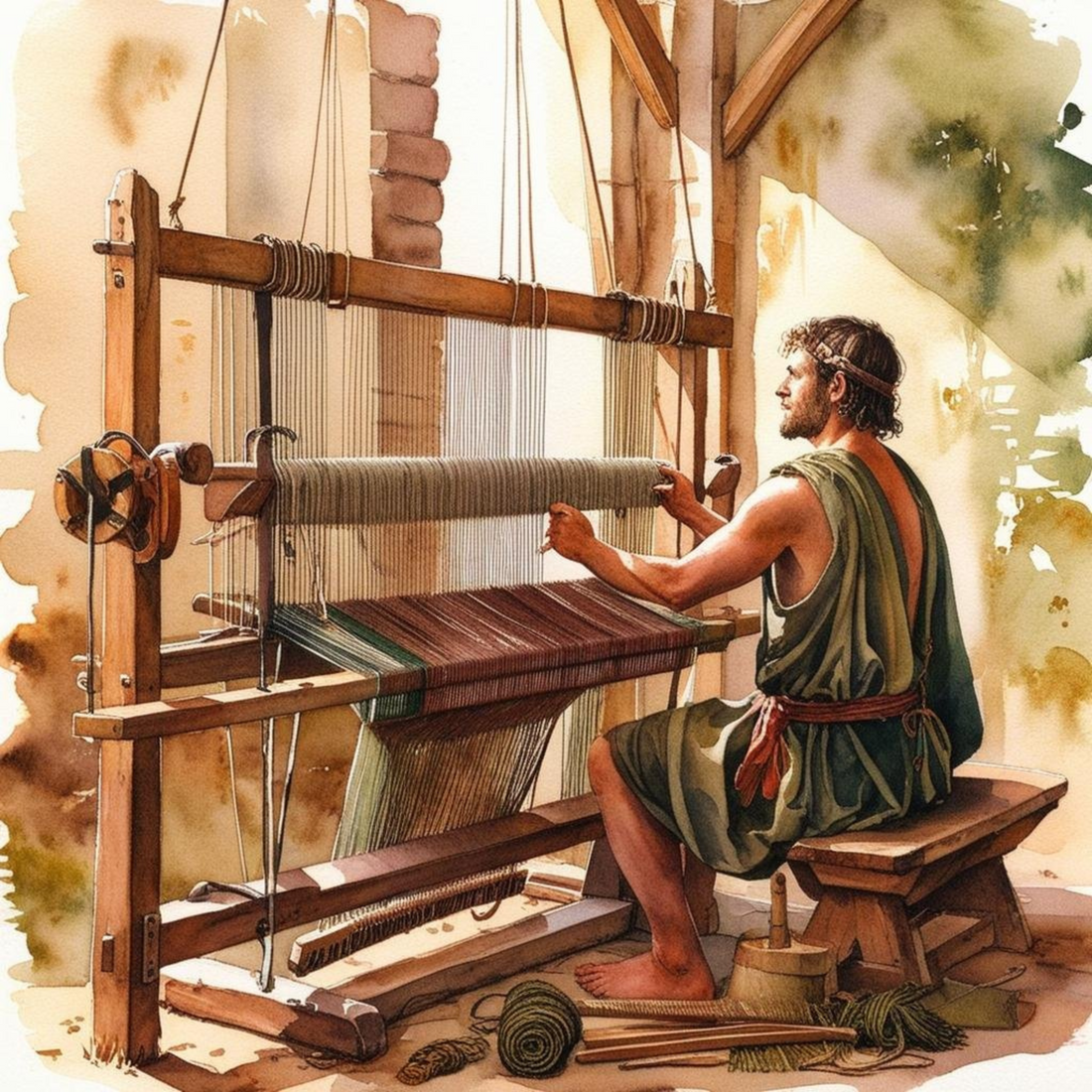
The Ancient Art of Weaving: A Tapestry of History
Did you know that weaving is one of humanity's oldest crafts? It’s been with us for thousands of years, weaving together not just threads, but the very fabric of our societies. Let’s unravel the history of weaving in Europe—a journey that spans from the Neolithic period to the Industrial Revolution, filled with fascinating claims, archaeological discoveries, and innovations that have shaped the way we create textiles today.
Weaving in the Neolithic Period (c. 6000–2000 BCE)
Picture this: early Europeans, around 6000 BCE, are busy crafting their textiles using flax and the wool from their new furry companions—domesticated sheep! Archaeological findings, especially from the regions of Central Europe and the Balkans, confirm that flax was the star player in Neolithic textiles, while wool didn’t make its grand entrance until later in the Bronze Age.
The Earliest Woven Fabrics (c. 5000 BCE)
Fast forward to around 5000 BCE, where we stumble upon the earliest known woven fabrics in Europe. Imagine being among the people in Switzerland and the Balkans, discovering beautifully crafted flax textiles made with simple upright looms! These early weavers were pioneers, laying the groundwork for generations to come.
The Near East Connection
Ever wonder where some of Europe’s weaving techniques originated? Our journey takes us to the Near East, where cultural exchanges introduced new tools like warp-weighted looms. These revolutionary tools, along with similar spindle whorls and loom weights found across regions, illustrate a rich tapestry of influence and collaboration that shaped early European weaving.
The Bronze Age and Beyond (c. 3000–1200 BCE)
During the Bronze Age, wool took center stage, rising to prominence as the preferred fiber. With the expansion of sheep farming, weavers were able to experiment with new fabrics and colors. Imagine the vibrant hues of natural dyes derived from plants and insects—like the brilliant blue from woad and rich red from madder—transforming textiles into works of art!
The Hallstatt Culture: Twill Patterns (c. 800–500 BCE)
The Hallstatt salt mines in Austria reveal a rich tapestry of history, preserving advanced twill patterns that we still use today. Excavations have uncovered beautifully woven fabrics with intricate 2/2 and 2/1 structures, showcasing the skill and creativity of ancient weavers.
Innovations of the Iron Age and Roman Period
As we enter the Iron Age and Roman periods, the weaving landscape began to change dramatically with the introduction of horizontal looms. These looms revolutionized textile production, allowing for greater efficiency and productivity. Think of bustling Roman textile workshops where fabric flowed like a well-oiled machine, catering to the vast needs of the empire!
From Guilds to the Industrial Revolution
The medieval guild system was a game changer, where weaving became a specialized craft controlled by skilled artisans. Fast forward to the Industrial Revolution, and we’re greeted by groundbreaking innovations like the flying shuttle and the spinning jenny that mechanized textile production. This era marked a monumental shift in how fabrics were created, paving the way for the modern textile industry.
Final Thoughts
From ancient Neolithic weavers to the mass production of the Industrial Revolution, weaving has been a significant force in shaping human history and culture. Each thread tells a story of innovation, collaboration, and artistic expression. So next time you admire a piece of fabric, remember the rich history and skilled hands that have woven it together!
Whether you're a history buff, a craft enthusiast, or just curious, weaving has something to offer everyone. Dive into the past, and you’ll find that the art of weaving is as vibrant and colorful as the fabrics it creates! Happy weaving!
References you might enjoy exploring:
- Grömer, K. (2016). The Art of Prehistoric Textile Making
- Harris, S. (2007). Cloth in Prehistoric Societies
- Bergerbrant, S. & Sabatini, S. (2020). Textile Production and Specialization in Bronze Age Europe
